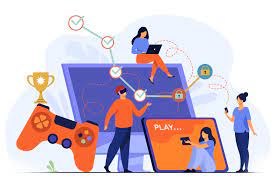
eLearning gamification is an innovative approach to training and development that incorporates game design elements in educational contexts. This method has been gaining traction within the Learning and Development (L&D) industry as it offers a dynamic way to engage learners, enhance retention, and motivate ongoing participation.
The concept of gamification utilizes elements commonly found in games such as points, levels, challenges, leaderboards, and rewards to create an interactive learning environment. By integrating these components, eLearning courses can simulate the excitement and engagement that games provide, while still maintaining a focus on educational objectives.
One of the key reasons this approach is vital for L&D professionals is its effectiveness in facilitating active learning. Traditional training methods often rely heavily on passive reception of information which can lead to disengagement and poor retention rates. Gamification, however, encourages active participation and problem-solving that can lead to deeper understanding and better retention of information.
Additionally, eLearning gamification taps into the innate human desire for competition and achievement. Leaderboards and award systems foster a sense of competition among peers which can drive learners to excel. Furthermore, the rewards and recognition received upon completing challenges work as positive reinforcement that can boost morale and motivate learners to set and achieve higher goals.
Another advantage is the capacity for personalized learning experiences. Gamified eLearning platforms often allow for adaptive learning paths where content difficulty adjusts based on the learner’s performance. This personalization ensures that learners remain in their optimal zone of challenge where they are most likely to absorb new information without feeling overwhelmed or bored.
It’s also important to note that gamification supports ongoing engagement beyond initial training sessions. As employees continue to interact with gamified learning modules, they regularly refresh their knowledge which leads to long-term retention and expertise in their field. This process of continual learning is crucial in today’s fast-paced work environments where skills need regular updating.
eLearning gamification also provides L&D professionals with valuable data on employee learning patterns, performance metrics, and areas needing improvement through back-end analytics. With such insights, they can tailor future training initiatives more effectively.
Finally, incorporating gamification into eLearning fosters an inclusive learning environment that caters to diverse learning styles. Visual learners benefit from colorful badges and progress bars; kinesthetic learners enjoy the interactive aspects of challenges; while auditory learners might appreciate narrative-driven quests.
In conclusion, eLearning gamification is a powerful tool for any L&D professional seeking to improve engagement, knowledge retention, personalization, ongoing participation, inclusivity, and trackable progress within their training programs. By leveraging the motivational dynamics of game design within an educational framework, organizations can enhance their employee training experiences dramatically leading to a more skilled and motivated workforce.
